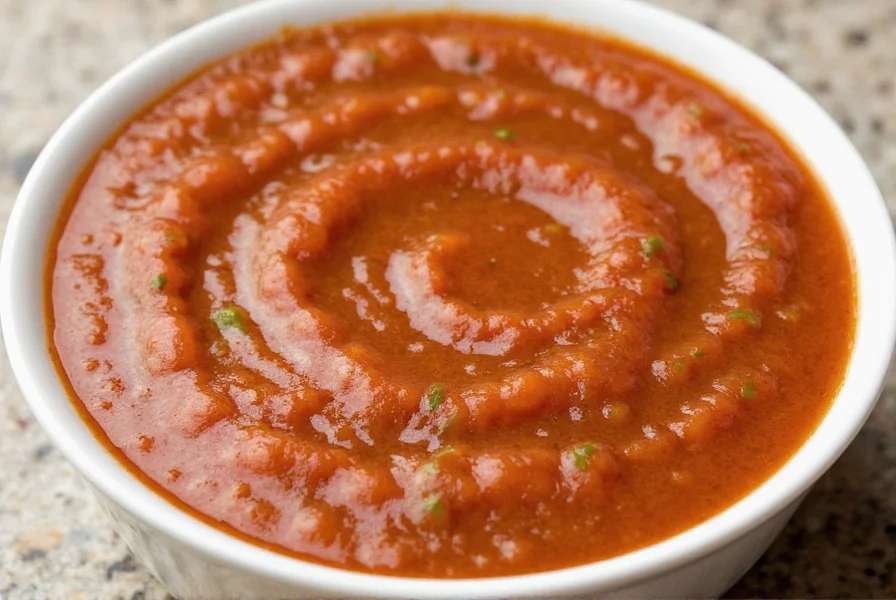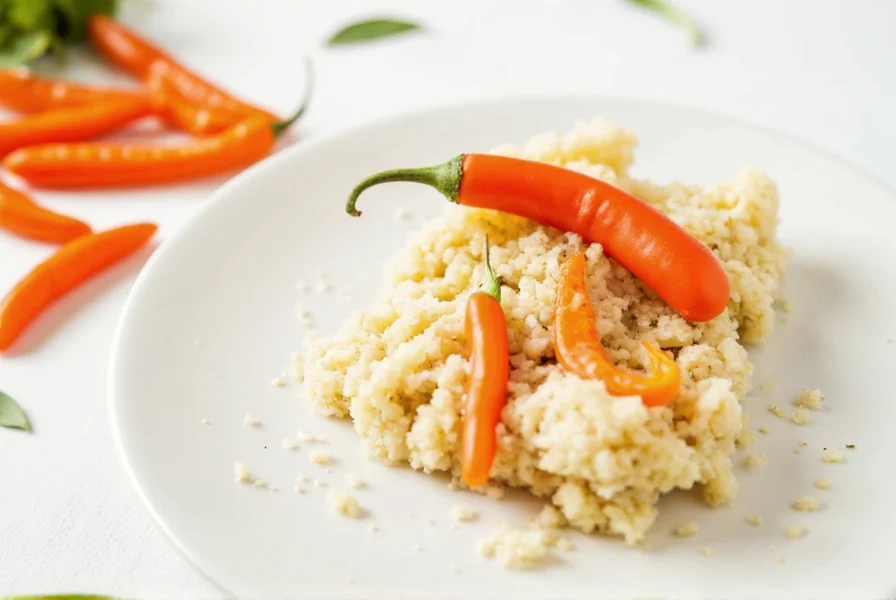Chiltepin Chill or Thrill? The Tiny Pepper That Packs a Big Punch!
If you're on the hunt for a spice that’s equal parts wild, rare, and explosively flavorful, then say hello to the chiltepin. Known as nature's own firecracker, this tiny pepper is a powerhouse of heat and flavor that has been cherished by chefs, home cooks, and chili enthusiasts alike. Whether you’re a seasoned spice hunter or just getting into the world of peppers, this article will walk you through everything you need to know about chiltepins—from how to use them to where to buy them—and why they might just become your new kitchen staple.
Table of Contents
- What Exactly Is a Chiltepin?
- Heat Level: How Spicy Are Chiltepins?
- Flavor Profile: More Than Just Heat
- Cooking with Chiltepin: Creative Ways to Use This Fiery Jewel
- Buying Guide: Where and How to Get Chiltepins
- Can You Grow Your Own Chiltepins?
- Safety Tips: Handling Heat Like a Pro
- Final Thoughts: Why You Should Go Wild for Chiltepin
What Exactly Is a Chiltepin?
The chiltepin, also known as the Mexican bird pepper or simply “the mother of all peppers,” is one of the few wild chili varieties native to North America. It thrives in the rugged terrains of northern Mexico and the southwestern United States—Arizona, New Mexico, and Texas, to be precise. Unlike its cultivated cousins like jalapeños or serranos, the chiltepin grows naturally without human intervention, making it a true survivor of the spice world.
Measuring no more than an inch in diameter, these little round beauties grow in dense clusters and change color from green to vibrant red as they ripen. Their small size may fool you into thinking they’re mild, but don’t be deceived—these are some of the hottest peppers out there, and they bring a depth of flavor that many other chilies can’t match.
Heat Level: How Spicy Are Chiltepins?
If you love a good burn, the chiltepin will not disappoint. On the Scoville scale—which measures the spiciness of chili peppers—it ranges between 50,000 and 100,000 SHU (Scoville Heat Units). For reference:
| Pepper | Scoville Heat Units (SHU) |
|---|---|
| Jalapeño | 2,500–8,000 |
| Serrano | 10,000–23,000 |
| Chiltepin | 50,000–100,000 |
| Habanero | 100,000–350,000 |
| Ghost Pepper | Over 1,000,000 |
So, while not as scorching as the ghost pepper or the Carolina reaper, the chiltepin sits comfortably among the upper echelon of spicy foods. What makes it unique, though, is that its heat hits quickly and lingers just long enough to remind you who’s boss.
Flavor Profile: More Than Just Heat
Spice lovers often chase the burn, but what really sets great peppers apart is their flavor profile—and chiltepins deliver in spades. They offer a bright, grassy, slightly smoky taste upfront, followed by a sharp, intense heat that builds gradually. Their natural terroir gives them an earthy complexity that’s hard to replicate with cultivated chilies.
Many chefs describe chiltepins as having a “wild” taste—not just because they grow untamed, but because their flavor feels alive, unpredictable, and deeply rooted in nature. When dried, they develop a richer, more concentrated flavor, which makes them perfect for rubs, salsas, and hot sauces.
Cooking with Chiltepin: Creative Ways to Use This Fiery Jewel
Because of their size and potency, chiltepins aren’t typically eaten whole (unless you’re feeling particularly daring). Here are some fun and flavorful ways to incorporate them into your cooking:
- Make Chiltepin Oil: Infuse olive oil with crushed dried chiltepins for a fiery drizzle that elevates pizzas, pastas, and grilled vegetables.
- Spice Up Salsas: Finely chop fresh or dried chiltepins and mix them into tomato-based or fruit salsas for a burst of wild heat.
- Dry Roast & Grind: Toast dried chiltepins lightly in a dry skillet, then grind them into a fine powder to make a smoky, spicy seasoning blend.
- Hot Sauces: Boil chiltepins with vinegar, garlic, and a bit of salt, then blend into a smooth sauce that can be used for tacos, eggs, or even cocktails.
- Smoked Meats & Fish: Sprinkle ground chiltepin over grilled meats or fish before serving for a subtle kick.

Buying Guide: Where and How to Get Chiltepins
Finding fresh or dried chiltepins can be a bit of a treasure hunt, depending on where you live. Here’s a handy guide to help you track down the best sources:
Where to Buy Chiltepins
- Natural Food Markets: Specialty stores focusing on organic or Southwestern cuisine sometimes carry dried chiltepins.
- Mexican Grocery Stores: Look in stores that cater to regional Mexican ingredients—especially those with Sonoran roots.
- Online Retailers: Amazon, specialty spice shops, and gourmet food websites often sell dried chiltepins or chiltepin-based products like oils, salts, and sauces.
What to Look For
- Color: Opt for deep red pods—they’re fully ripe and have the most intense flavor.
- Packaging: Make sure the chiltepins are stored in airtight containers to preserve freshness and potency.
- Origin: Authentic chiltepins come from the U.S.-Mexico border region. If possible, choose products that specify origin.
Recommended Products
| Product | Description | Features | Best For | Occasion |
|---|---|---|---|---|
| Organic Dried Chiltepins – Arizona Harvest | Wild-harvested chiltepins from the Sonoran Desert | Natural, non-GMO, hand-picked | Home chefs, spice lovers | Cooking, gifting, collecting |
| Chiltepin-Infused Olive Oil | Small-batch oil made with sun-dried chiltepins | Smooth heat, rich aroma | Drizzling, finishing dishes | Gift baskets, casual dining |
| Chiltepin Hot Sauce | Blended with lime and vinegar for balance | Spicy, tangy, bold flavor | Taco nights, breakfast, cocktails | Everyday use, parties |
Can You Grow Your Own Chiltepins?
While chiltepins are naturally wild plants, dedicated gardeners can attempt to cultivate them at home—but it takes some effort. These peppers thrive in arid climates and require plenty of sunlight, well-draining soil, and minimal water once established.
- Start Indoors: Sow seeds indoors 6–8 weeks before the last frost date.
- Transplant Outdoors: Once the danger of frost has passed and the soil warms up, move seedlings outdoors.
- Provide Support: Chiltepin plants are shrubby and benefit from staking or caging.
- Pest Watch: Keep an eye out for aphids and spider mites, especially during dry periods.
Keep in mind: Chiltepins grow slowly and may take a full season to bear fruit. But if you’re patient, you’ll be rewarded with a truly rare and authentic crop.

Safety Tips: Handling Heat Like a Pro
Handling chiltepins means dealing with serious heat—literally. To avoid discomfort or accidents, follow these safety tips:
- Wear Gloves: Capsaicin (the compound responsible for spiciness) sticks to skin and can cause irritation.
- Avoid Touching Face: Especially your eyes! One accidental rub can lead to a very unpleasant experience.
- Use a Mask When Grinding: Dried chiltepins release fine particles that can irritate the respiratory system.
- Rinse Hands with Milk: Water doesn’t wash away capsaicin effectively—milk or vinegar-based solutions do.
Final Thoughts: Why You Should Go Wild for Chiltepin
The chiltepin isn’t just another chili—it’s a symbol of resilience, flavor, and culinary adventure. From its fierce heat to its complex flavor, this tiny pepper has earned its place among the elite spices of the world. Whether you're adding it to your favorite dish or proudly displaying a jar on your spice rack, the chiltepin offers a way to connect with nature’s raw intensity.
So, next time you want to spice things up—not just in flavor but in spirit—grab a handful of chiltepins and let the wild side of spice shine in your kitchen.










 浙公网安备
33010002000092号
浙公网安备
33010002000092号 浙B2-20120091-4
浙B2-20120091-4